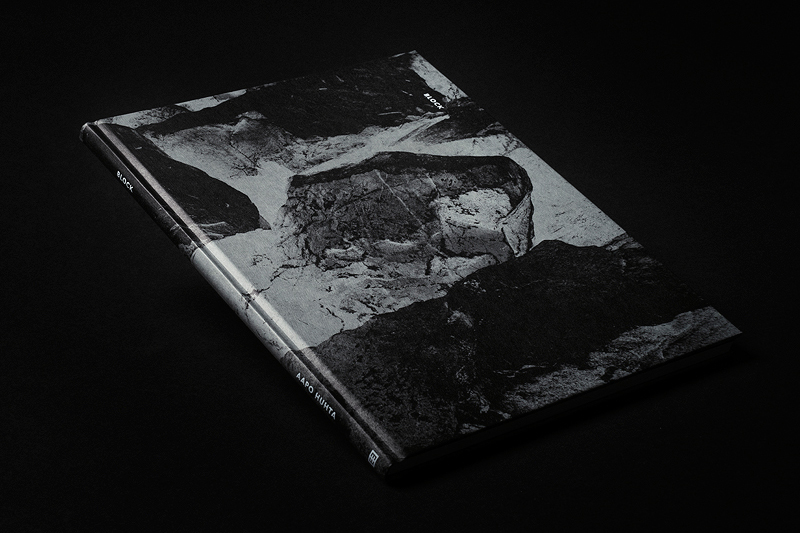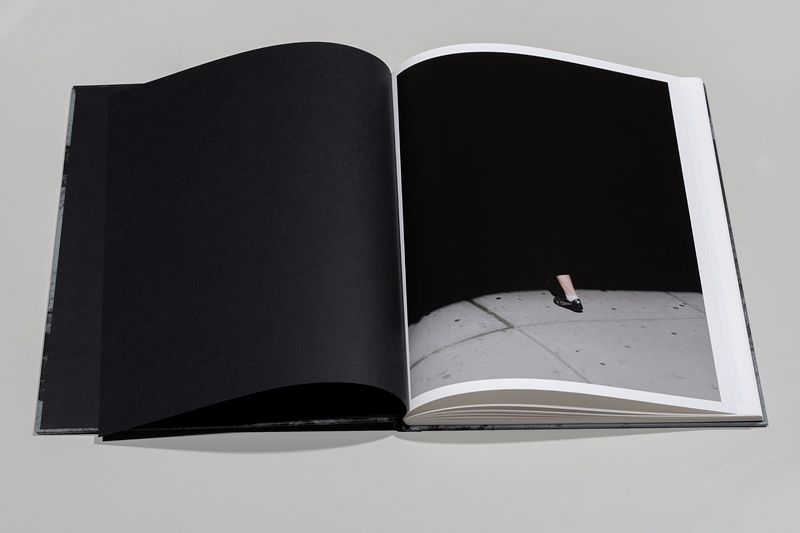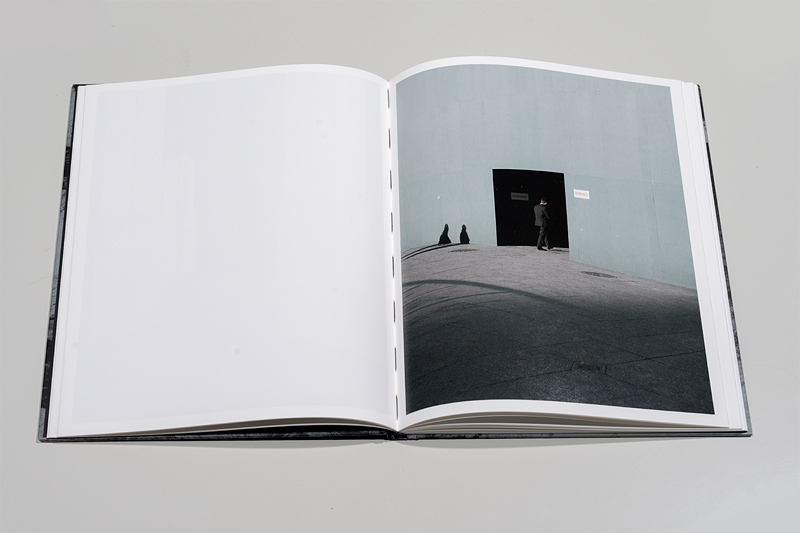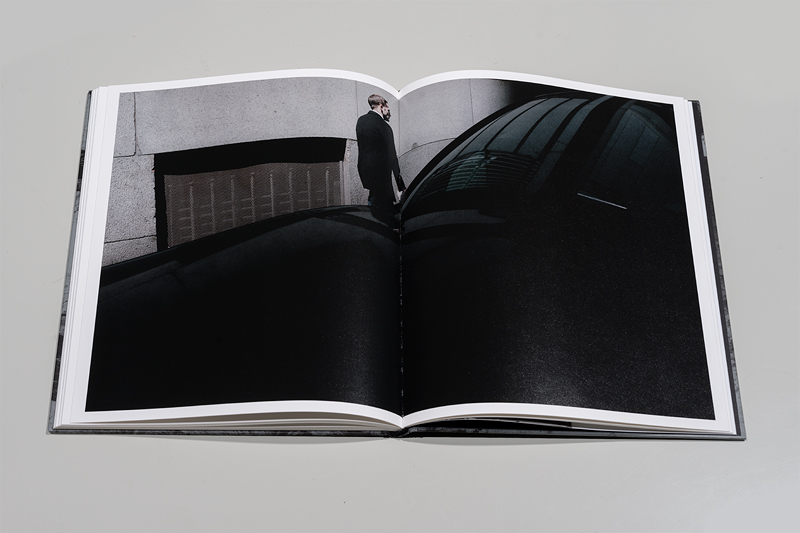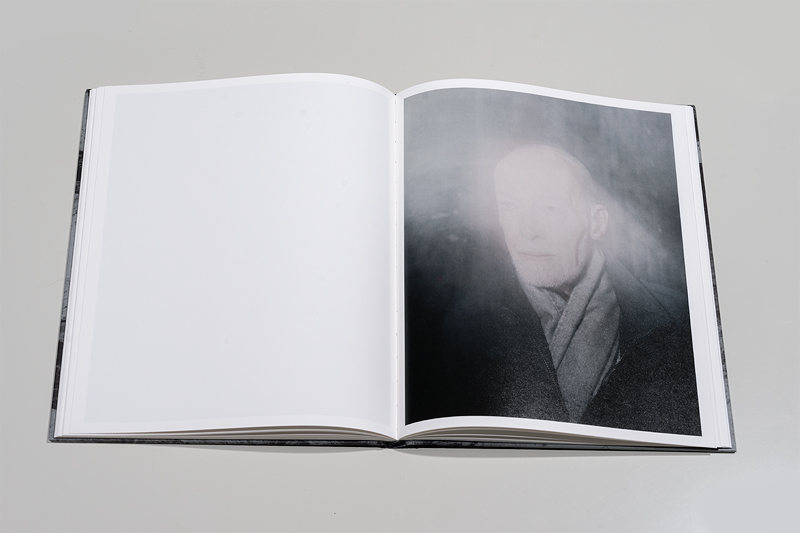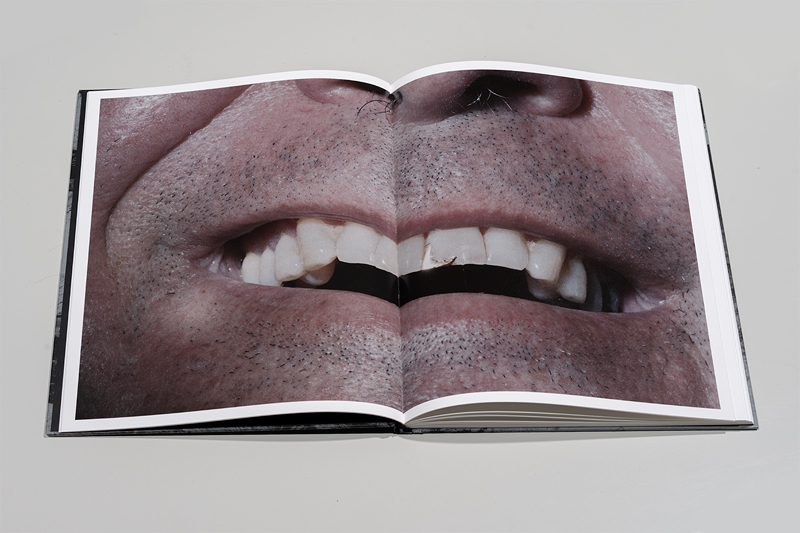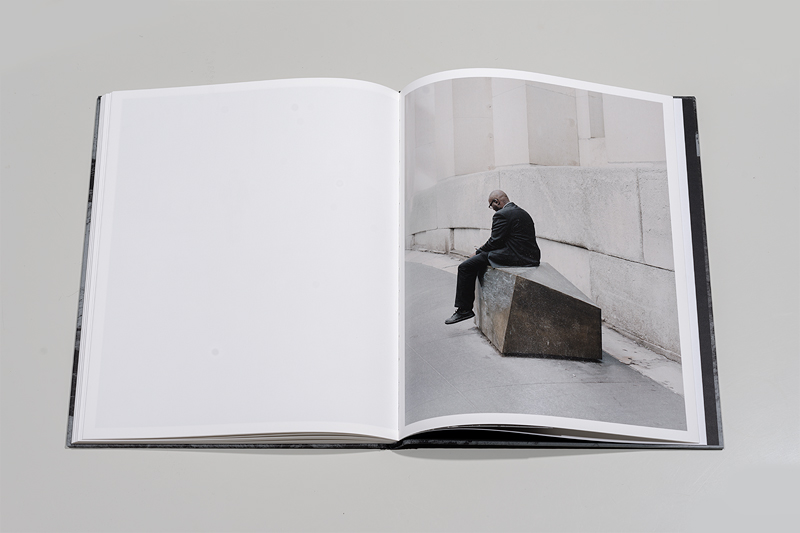Aapo Huhta – BLOCK
All spreads courtesy of the artist
BLOCK by Aapo Huhta (Kehrer Verlag, 2015), BUY
The corporate centers of Manhattan are a maze of concrete canyons. Midday, shafts of light penetrate the narrow corridors and the stark light illuminates the figures that move in and out of the shadows. The tall buildings cast long shadows, but also shelter unseen activities. We may not know what goes on inside the buildings, but we can see what happens on the streets, where the activities spill out, and those involved move from place to place or go simply home. From the narratives of Kafka to bleak the megapolis of Blade Runner, the city has long been a stage to imagine and rehearse states of alienation. Drawn from photographs shot in midtown Manhattan and the financial district in 2014 and 2015, Aapo Huhta’s Block presents a bleak vision of a haunted modern city. Offering little hope, Huhta’s city is shrouded in blinding light and impenetrable darkness.
The book opens with a body moving into darkness—a trailing foot caught in a shaft of light. In the following image, large fresno trowels smooth cement in the sidewalk, removing traces of the footsteps and erasing the human presence. Alternating between architectural shots of concrete facades, nylon scrims, locked doors, and images of suited men moving through the shadows, Huhta’s has crafted a dystopic city far removed from Manhattan. Obscured by harsh shadows, mysterious figures move about as if in some Kafkaesque maze. In one chilling instance, a weathered missing poster pleads for information about a man in his early 30s. The figures whose faces we do see either shuffle through the sunlight, grope at the ground, or stand bewildered in the concrete landscape. In one startling instance, a gold-toothed grin cackles in our face. Unsettlingly close, the face penetrates our otherwise distanced view.
Huhta has a keen eye for unsettling details that lend the city a sinister air: pink fiberglass oozing from behind padlocked double doors or concrete blocks weighing down a makeshift tripod for a security camera. Each anomalous construction hints at something ominous beneath the surface, something being restrained or held down. The dark and almost monochromatic palette of the work enhances the work’s claustrophobic feeling and helps transforms the city into the works most menacing character. Carefully sequenced, the book balances moments of icy detachment with a gritty drama that is barely contained. Danger lurks beneath the stone and in the shadows. In one image, a leashed dog, his owner outside the frame, offers a guarded but wary stare. His otherwise neutral regard takes on ominous meaning in the context of the work. Don’t go any further. Turn back.
Both literally and symbolically, BLOCK is an apt title. Shadows and stone greet us at every turn and escape is thwarted. There is no horizon or sky and the exits are closed off. At first glance, I was immediately reminded of Grégoire Pujade-Lauraine’s excellent A Perpetual Season, which created a similarly claustrophobic city. Darker in temperament than Pujade-Lauraine’s work, Block couples angular light and sharp focus to accentuate the work’s contemptuous regard for the city. The clarity and deep shadows both reveal and conceal. Huhta’s occasional use of repeated or sequential images and dramatic chiaroscuro also calls to mind Paul Graham’s recent body of work The Present. Whereas Graham’s work is a meditation on perception set against the complex social and political backdrop of New York City, Huhta’s work is a dark tone poem about a city gone wrong.
The book concludes with a heartbreaking short story by Jenny Hollowell entitled A History Of Everything. Printed on a long page that has been folded into the spine of the book, the story’s dispassionate narration of cosmic events quickly narrows to something intimate and emotionally powerful. In contrast to Huhta’s work, the emotional payoff of Holloway’s work asks us to revisit his otherwise forbidding images with hopeful eyes. Beneath what might otherwise be read as a cynical take on the alienation of urban life we can see a glimmer of hope—a resonant and emotional human life beyond the shadows and cold stone.

